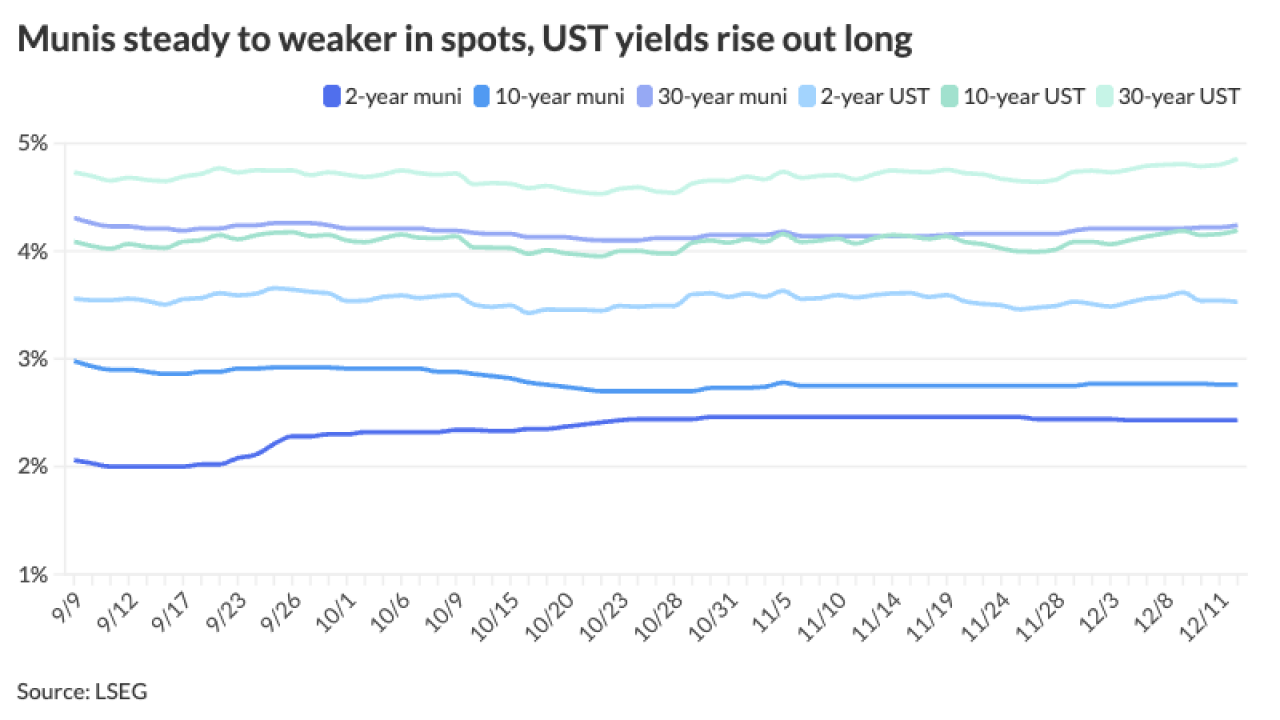Moody's Investors Service has revised to negative, from stable, our rating outlook for the City of Los Angeles general obligation bonds (rated Aa2) and general fund-secured obligations (rated Aa3 to A2, depending on the specific security pledge). The revised outlook primarily reflects the possibility that the city may experience an extended, multi-year period of significantly diminished general fund reserves, limiting its financial flexibility and weakening its balance sheet to a level inconsistent with the current rating. The erosion in the city's historically better-than-average willingness and ability to quickly rebalance its budget mid-year also contributes to this revised outlook. These negative developments continue to be balanced by, and our rating continues to reflect, the city's very modest and rapidly retired direct debt burden, as well as an extremely diverse economic base that has likely reached the low point of the current economic cycle. The inherent stability of the city's property tax base relative to market values and the above average strength of the general obligation security pledge and administration are additional positive considerations.
Los Angeles underestimated the full effect of the recession on its revenues and was slow in implementing planned cost savings for the current fiscal year. As a result, its current year budget was recently estimated to be $212 million out of balance, or approximately 5.0% of projected revenues. Absent corrective action, the city's budget gap in fiscal 2011 would increase to $484 million. The city did, however, recently adopt a number of current-year budget adjustments that should at least partially close this projected gap. The city entered the current recession from a position of relative financial strength, after having built up its reserves during the economic expansion, but the downturn has largely eroded that advantage and the current year's budget balancing measures will likely leave the city in a weaker position than previously expected.
The city currently projects that its budgeted reserves would fall to a very thin $24 million by year end (not counting about $29 million in unrealized escheatments and $32 million of judgment loan repayments), even if the city adopts its Administrative Officer's currently proposed budget balancing plan. This would be down from $205.5 million originally budgeted at the beginning of fiscal 2010, or about 4.7% of budgeted revenues, which was just slightly less than the prior four year average of 5.0%.
The city's GAAP basis reserves are typically much higher than its cash-basis, budget reserves, reflecting hundreds of millions of net receivables, but recent years' operating deficits have also weakened the city's GAAP basis position. The city has yet to release its fiscal 2009 consolidated annual financial report, but as of fiscal 2008 Los Angeles' total and unreserved fund balances were 13.2% and 9.3% of revenues respectively. While modest for the rating level, this was relatively healthy compared to many of Los Angeles' large, U.S. city peers.
The city's current budget proposal--its "Three-Year Plan To Fiscal
Sustainability"--is ambitious in scope and timing. The plan lays out a
strategy for rebalancing the current fiscal year's budget, largely with the use of the remaining budgeted reserves, and returning the city to a 5% general fund budget reserve in fiscal 2012 while simultaneously establishing a structurally balanced budget in that year. The anticipated reserve replenishment mechanism, however, is uncertain, in that it assumes a long-term lease of a number of city parking structures in a public-private partnership. Whether such a transaction can be completed on a timely basis is questionable, particularly in the current economic environment. The city optimistically projects that this transaction would be completed before the end of the current fiscal year, or in the first quarter of fiscal 2011.
The Three-Year Plan also includes a broad range of city service elimination, department consolidation, and potential outsourcing, though the savings from these measures have yet to be clearly established. Estimates are expected in March; in our experience, such savings often prove elusive. The city also anticipates either leasing or selling other city assets, including its zoo, golf courses, and theaters. If realized, these could also contribute to the reserve replenishment.
A key element of the Three-Year Plan includes the elimination of 1,000 general fund positions in the next three to six months, generating a full year savings of approximately $65 million. Predictably, this proposal has met with opposition. It is, unfortunately, one of the plan's few immediate, tangible cost saving elements, and delaying its implementation will, while preserving jobs, potentially weaken the city's long-term credit quality.
What Could Change the Rating/Outlook--UP
The city successfully implements its Three-Year budget plan, balancing the current year's general fund budget, rebuilding reserves, and establishing long-term structural budget balance.
What Could Change the Rating/Outlook--Down
The city's reserve position is further depleted and not replenished on a timely basis, the budget solutions adopted are largely one-time measures rather than on-going, and/or the economic downturn continues to erode the city's revenue base.
The last rating action with respect to the City of Los Angeles was on November 25, 2009 when an A1 rating was assigned to the city's 2009-E Lease Revenue Bonds.
The principal methodology used in this rating review was General Obligation Bonds Issued By U.S. Local Governments, published in October 2009 and available on





